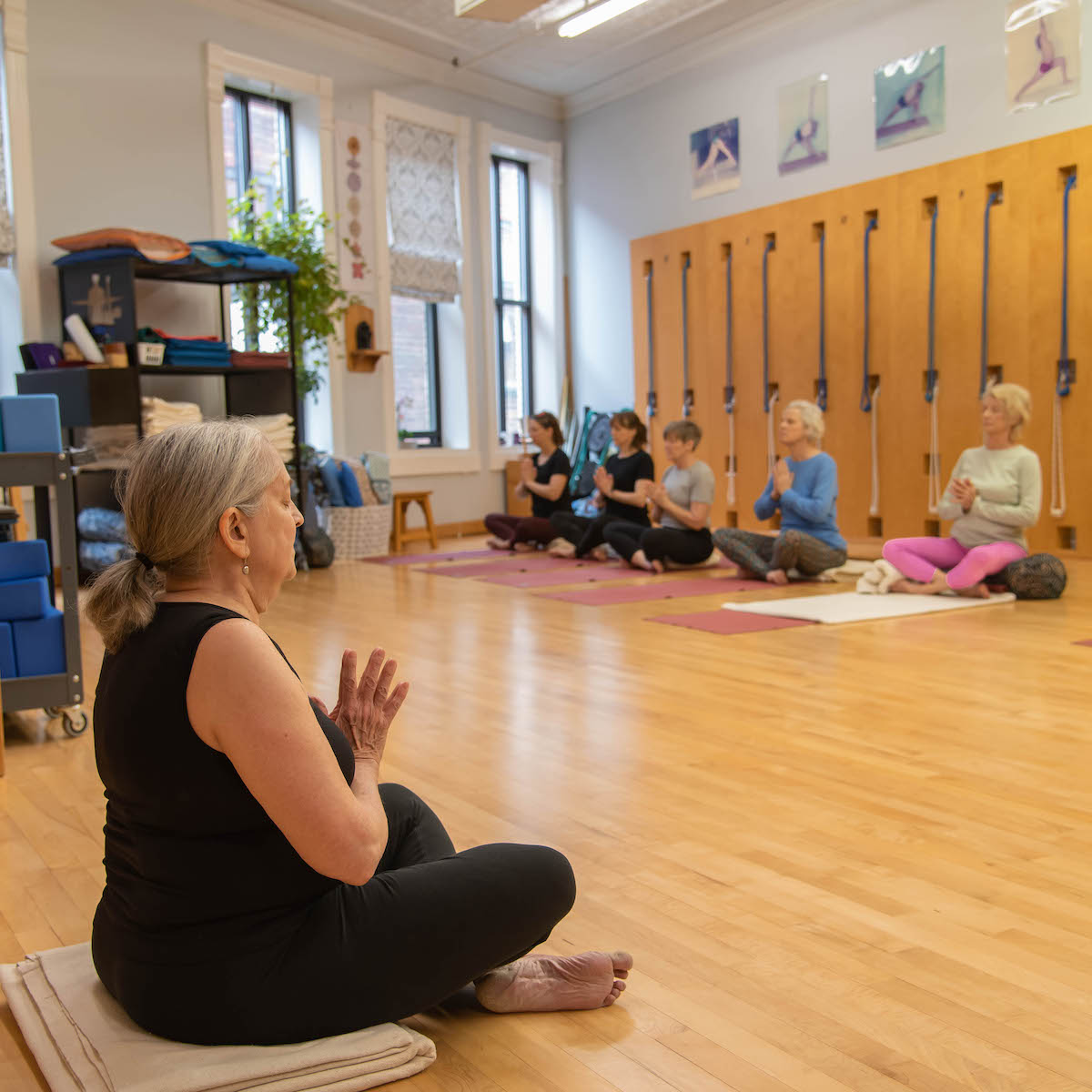Even if you haven't been to a yoga class, odds are that sometime, somewhere, you heard the chanting of “OM.”
Also written “AUM,” this mantra is a quintessential part of Eastern cultures and spiritual communities, was part of the New Age movement in the West, and is still used today within modern yoga classes.
Within Iyengar Yoga classes, “AUM” often also begins and ends the chanting of The Invocation to Patanjali. In India, you would not start a yoga class without it. But why?
There's a vast history in this great practice of yoga. None of us would be sitting in a yoga studio today if it weren't for Patanjali writing down The Yoga Sutras. For some, participating in the invocation can be a way to acknowledge that rich history.
The invocation also “invokes” the essence and the energy of all the teachers who have shared this practice. Acknowledging that brings a humbling to the ego and opens us up to learn. (If you are curious about the story and significance of Patanjali and the invocation, there are some handouts at The Yoga Place that you can pick up).
Some might not feel comfortable chanting. And that's OK. It's a personal choice.


What about OM?
OM has a larger and more energetic purpose within the spiritual endeavor of yoga.
The three aspects of “AUM” – “a”, “u”, and “m” – are thought to be the essence of every other word or sound uttered in the universe. To chant “AUM” means that you are connecting your own individuality back to the greater Universal Source. The Yoga Sutras refer to the symbol and sound of “AUM” to be the symbol and sound that connects us to any existing higher power. And, “AUM” is the most intense of the “seed mantras”; sounds that stimulate and vibrate our energetic centers (chakras) within the body.
There have been numerous studies on the effect of “OM” and chanting meditations on brain function and the nervous system. Chanting “OM” has shown to lower blood pressure, increase focus, and stimulate the vagus nerve that basically has control over many of our essential organ functions and emotional states. Even just sitting in a room and experiencing the vibration of that sound could have these effects, so sitting quietly while others chant is beneficial too!
Whether you choose to chant or not, take a moment before your yoga class to focus in to that greater awareness and quieter vibration of breath and body. Om and the Invocation just give a more formal reason to take deeper inhales and let out longer exhales in order to still the mind and be ready for yoga.